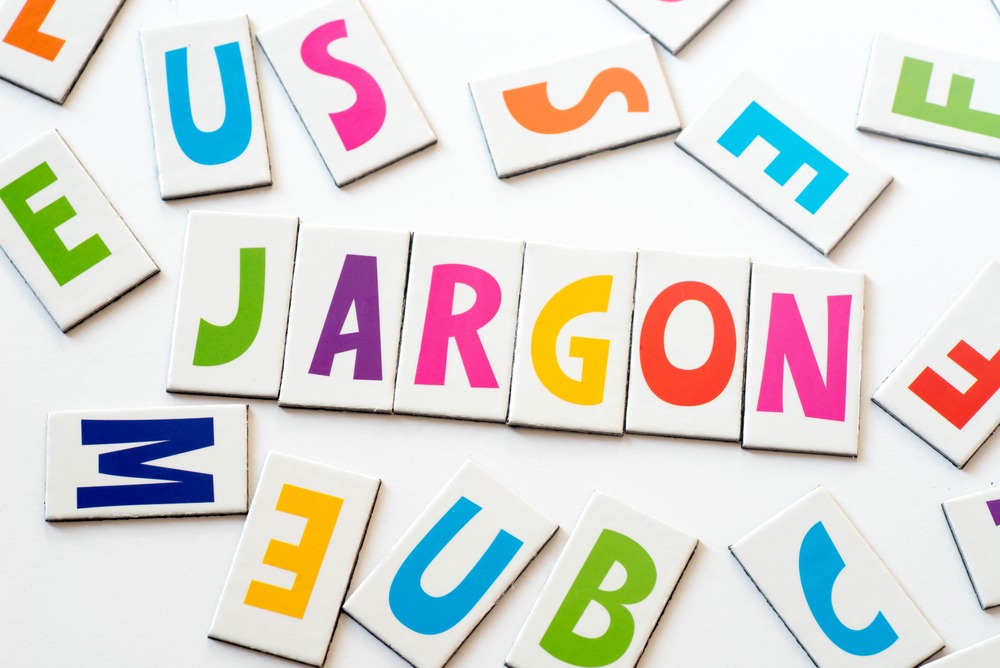Deconstructing Jargon: A Guide to Industry Acronyms

For the unfamiliar, it may sometimes appear as though it’s written in code
In reality, it just makes it easier to describe complex ideas that are often referred to.
Here’s a handy guide to help you translate some of that jargon:
B2B: Business to Business
Refers to any company that provides a service to others business, rather than a tangible product. B2B Communications is an advertising term for a business marketing its services to another.
B2C: Business to Customer
Marketing that involves a business promoting it’s services or products to customers, as opposed to other businesses.
BR: Bounce Rate
Quite simply, bounce rate is the number of visitors to your website that move on without any engagement in your content.
CR: Conversion Rate
This is the number of visitors to your website that go on to become customers or clients.
CRM: Customer Relationship Management
Any system or software that coordinates the relationship between yourself and your customers. Great CRM systems can help you keep track of potential leads, monitor different stages of engagement and various other sales information. They can assist with tailoring a more personal sales experience and ensure you don’t miss any opportunities to connect.
CTA: Call to Action
In marketing, we often use persuasive calls to action so that an audience knows how you want them to engage. It can be anything from asking direct questions, to a simple button placement in the right spot. Without effective calls to action, your customers may not respond and you could be losing sales.
CSS: Custom Style Sheets
A kind of programming language that is used to build websites. It’s similar to HTML.
CTR: Click Through Rate
In web analytics, click through rate refers to how many visitors travelled through the different pages available on your website. It’s a useful tool for measuring which content generates the most interest and exploring user engagement with your brand.
ISP: Internet Service Provider
A company that provides internet access to their customers.
KPI: Key Performance Indicator
A value that translates the goals and strategies of a business into quantifiable values. KPIs can be used anywhere in business, not just marketing, to outline metrics and track whether the current strategies are performing well or need to be reassessed.
PPC: Pay Per Click
An advertising model that allows users to pay only when their advertisement is clicked on. In other words, it’s like buying web traffic rather than organically finding it. The most common publishers of PPC are search engines and social networks. This is also sometimes known as CPC – Cost per Click.
SEM: Search Engine Marketing
A type of marketing strategy that involves paying to improve a page’s position on search engine result’s pages. It is usually associated with PPC and SEO (see next)
SEO: Search Engine Optimisation
A method of improving a website’s position in web search results by making it fit certain analytical criteria. It’s unpaid, and can often be an effective way of increasing brand awareness and website traffic.
SERPs: Search Engine Results Pages
These are the pages that appear after a user has typed something into a search engine. The results are ranked by relevance to search terms (which is determined by several analytical factors). Each page is displayed with its title and a caption (usually the meta description).
SMM: Social Media Marketing
Utilising the various social media platforms to undertake marketing activities such as promotions and campaigns.
ROI: Return on Investment
A term which is used widely in business to assess the performance of any singular investment. In marketing, it specifically refers to how much revenue is being generated in relation to the amount of capital spent on marketing strategies.
USP: Unique Selling Proposition
Your USP is what sets you apart from your competitors. Marketers will use your USP to convince audiences why you are that better choice. This is most often your best market leverage, so it’s important to identify this early on.
UI: User Interface
UI is a term that describes anything that a visitor to your website can interact with. Buttons, videos, photo galleries, menus – all of these interfaces need to be well designed in order to provide a great UX (see next).
UX: User Experience
From the first landing on your page to when they leave, user experience refers to how an individual interacts throughout their digital journey. It encompasses visual design, ease of use, seamless transitions between content and overall useability. UI and UX work together to ensure your website is memorable for all the right reasons.
Digital marketing and web design is a complex field that is always evolving, but these common terms encompass some core principles of what agencies can do to help grow your brand and drive sales. With more people shopping online than ever before, you can’t afford not to put these tactics in play!